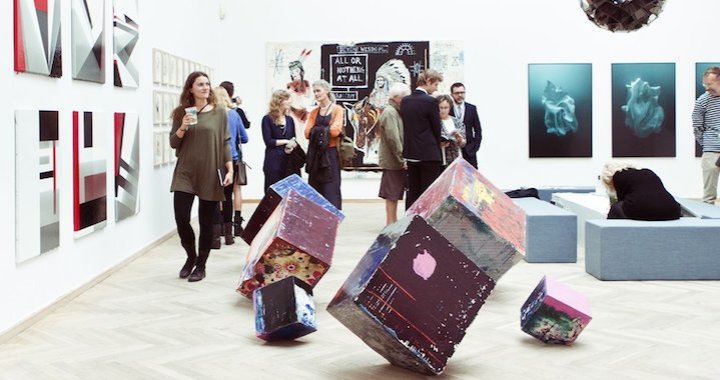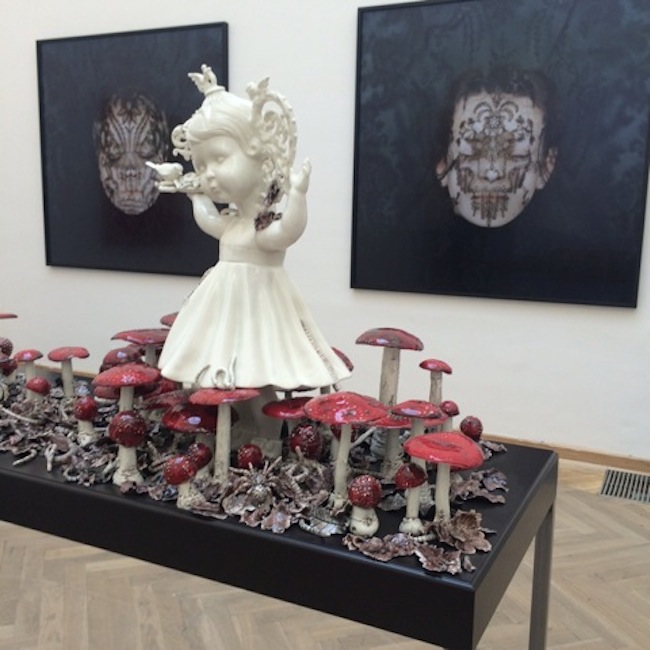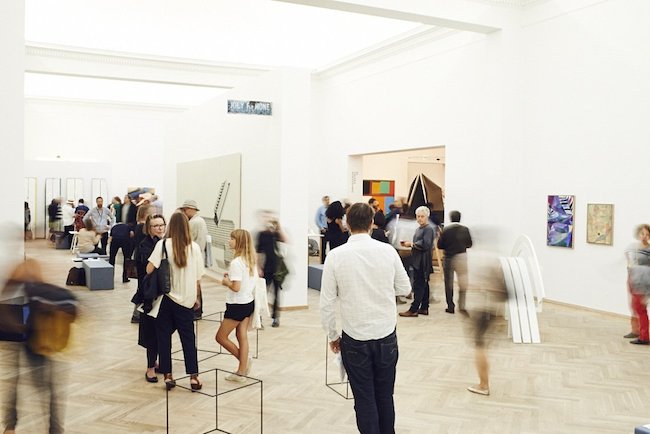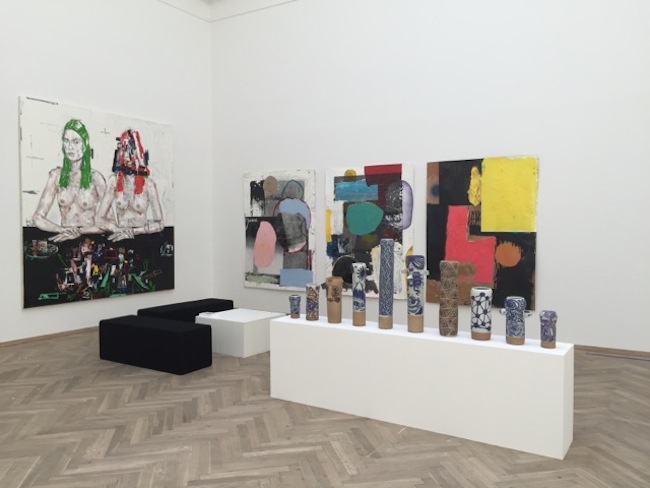
CHART ART FAIR 2015, Copenhagen
Q&A with one of CHART’s founders, the gallerist Susanne Ottesen and curator Francesca Gavin
20/08/2015
CHART ART FAIR 2015
Copenhagen, Denmark
August 21 – 23, 2015
This weekend, in the heart of Copenhagen, the grand halls of The Royal Danish Academy of Arts’ Kunsthal Charlottenborg will be once again packed with some of the best contemporary art in Europe: 28 selected galleries from the Nordic countries will be presenting at the third and, to date, most ambitious edition of the CHART ART FAIR. CHART was founded in 2013 by a small breakaway faction of five of the leading galleries in Copenhagen – Gallery Susanne Ottesen, Galleri Bo Bjergaard, V1 Gallery, Andersen’s Contemporary and David Risley – as an alternative to Art Copenhagen. With them they took a number of the best galleries in Copenhagen, in addition to inviting selected galleries from the Nordic region, into the small and exclusive circle that CHART is, particularly due to its modest size compared with some of the large international art fairs. However, this is the only thing that is modest about CHART; despite the fair’s young age, it lacks neither ambition nor scope. In just a short space of time, CHART has achieved noteworthy success with rather impressive visitor numbers that are increasing every year, as well as growing international recognition.
It is a fact that art fairs are, first of all, a platform for galleries seeking to sell art and establish new contacts, but in the past years the majority of art fairs have focused a great deal on how to be more than merely a marketplace for wealthy art collectors. Therefore, an array of non-commercial initiatives, such as talks, performances, concerts, as well as different non-profit projects, have become an important part of most art fairs, and in this regard CHART is no exception. This year, the fair once again offers a manifold program that includes special projects presented both within the fair and around the city, such as a series of video installations displayed in selected stores in the city, and a performance programme curated by Francesca Gavin, who is the Visual Arts Editor of Dazed & Confused, Art Editor of Twin, and a contributing editor at Artsy.net, Sleek and AnOther. There will also be a series of talks with prominent guest speakers, curated by Mark Rappolt, Editor-in-Chief at ArtReview.

CHART ART FAIR 2014. Courtesy CHART ART FAIR
Despite the pressure of work before the opening of the fair, one of CHART’s founders, the gallerist Susanne Ottesen, had a spare moment for an express-interview about the success of CHART and the vision of the fair.
“In brief, CHART ART FAIR is about fellowship, generosity and the desire to present art in the best possible way. Kunsthal Charlottenborg is situated next door to the Academy of Arts, which means that we are close to where artists are born and the origin of it all. This imposes a certain obligation, but it also gives the fair contemporaneity.”
Is it necessary to think differently as a gallery in a small country such as Denmark, and to cherish national identity in order to stand out and to be noticed? Or on the contrary, do you have to open up internationally as much as possible to be successful? Is national identity, particularly in a Nordic context, an important aspect of art today?
“No, it’s not. However, you can speak of a specific Nordic approach to art and the importance that art has in our daily life.
CHART ART FAIR originates from the idea that we actually can do things jointly, which is a rare notion in the art world, where everything is about me and mine. We are trying to reach out by saying ours instead. There are many important galleries in Scandinavia that are players on the large international art scene. The idea with CHART is to invite guests “to dine” at home. One of our strongest cards is that we are able to present high quality works, and that we are extremely competent in a social context.”
How would you estimate your success thus far, in regard to the local market as well as international recognition and collectors?
“Our success has been overwhelming from day one. The Danish public has been pouring in, the number of international collectors is growing steadily, and we have experienced huge attention internationally. We have acquired two large international media partners: ArtReview and Artsy. ArtReview took on a role of active participation by making the TALKS program. Likewise, Artsy had many more hits at CHART than at some of the large fairs. This tells you how much focus there is on the Nordic, and that CHART is able to offer the best art from the Nordic region. People think it’s interesting and thrilling.”

Martin Asbæk Gallery. CHART ART FAIR 2015
What is your focus this year? Are there any new initiatives that are particularly interesting, and which you would like to highlight?
“Among others, we have launched a very ambitious new platform, 'CHART Social'. This is an architecture competition for Nordic schools of architecture, with Bjarke Ingels [architect and founder of BIG – L.R] as chief judge. Teams of architects compete to design the food stalls for some of the best Danish restaurants and wine producers that will be present at CHART. Our goal is to build a bridge between art and other disciplines. We would like people to see art in a new way.”
What are your ambitions with CHART for the future? Do you have any plans to expand? Are you, perhaps, also considering including international galleries?
“Our ambition is to do things in a new way; to see art in a new way. We are extremely happy that we have the chance to be in the heart of Copenhagen, in this incredible building, so in order for it to be possible for CHART to stay in Charlottenborg, there is a chance that we will expand, but in a way that nobody has seen before. This is generally what we would like to do with CHART; we would like to push the concept of 'art fair' to a point that is completely new.”

CHART ART FAIR 2014. Courtesy CHART ART FAIR
The curator Francesca Gavin was also there to tell us a little about this year’s performance programme, called SPECTRUM. CHART has particularly focused on performance so as to provide a platform for an art genre that often exists under difficult conditions on the art market.
How did you choose artists for the performance programme of this year's CHART? What was important to you?
“The concept came first – this desire to reposition colour as something vital, interesting and intelligent, rather than as something marginalised as feminine, un-intellectual and unimportant, left behind in the wake of concept, line and the monochrome. When I was selecting the artists, I wanted to reflect CHART's focus on Scandinavia – it felt like a natural focus to have. I wanted the performances to have a sense of breadth – using everything from the moving image, to sound, to light as the basis of exploring the ideas of the spectrum. By coincidence, a lot of the artists happen to be women!”
The title of the performance programme is SPECTRUM; what is the idea behind it?
“I was very interested in the writings of the artist David Batchelor on the subject of chromophobia – the sense that there is a fear of colour in contemporary art. After modernism, conceptual art, and minimalism, colour got stuck with a bad reputation – as something a bit too sensorial, physical, unimportant. I wanted to create a programme of engaging work that appealed to a really wide audience; a programme that would disprove the marginalization of the rainbow.”
CHART has a cooperative agreement with Copenhagen Art Week, which this year has the headline of "Shared Space". Did you have this in mind when curating the performance programme? Do the performances, in some way, refer to the theme?
“It wasn't my focus, but the idea fits well. Performance is, in essence, about creating an artwork in which the audience shares space with an artist – the boundaries between them and us blur, and we are both part of a collaborative atmosphere and experience. I think that can be so powerful, interesting and fun. I love how performance has had a rebirth in the past few years in art, and is no longer seen as something strange or dull. It is a medium that literally injects life into the art experience, and I think audiences really want that. Art that they can experience, react to, share space with.”

V1 Gallery. CHART ART FAIR 2015
What is the biggest challenge when working with performance art, and why is performance art increasingly becoming an integral part of commercial art fairs? Are art fairs a good platform for performance art?
“I think performance is a powerful foil to the commercial aspect of fairs. They aren't that easy to sell! In recent years, fairs have become much more than mere markets with only commercial purposes, too – they are spread out over days now. People who want to get a taste of what is trending in contemporary art, or see a good selection of work, come to the fairs just 'to look'. They expect something beyond just a booth – which is something that I think CHART does exceptionally well. The fair feels much more like an exhibition in its presentation, and its focus on projects that go beyond the confines of galleries is part of what makes it so refreshing and successful.”
If you had to choose only one performance from the programme, which would you suggest as a must-see that shouldn't be missed?
“That's like choosing between babies! If you're interested in technology, try David Mullet's virtual reality piece playing on the weekend. If you want to start a collection but have no money, keep an eye open for the risograph project – we'll be giving out free prints at undisclosed times throughout the weekend. But if you can only come to one performance, go see Julie Verhoeven's and Peter Jensen's collaborative work on Sunday. It should be unmissable.”